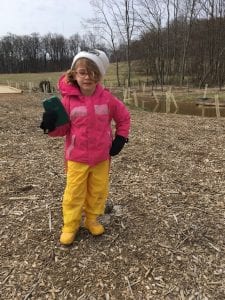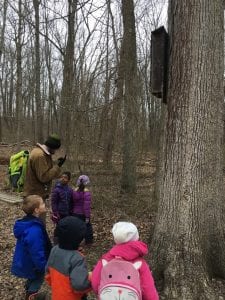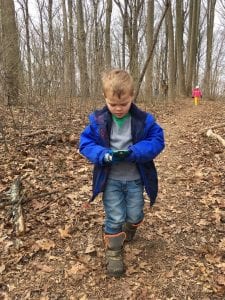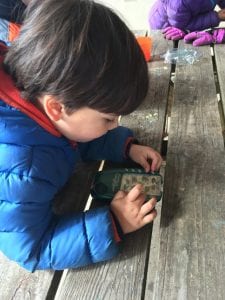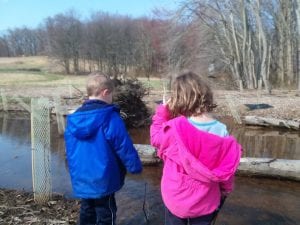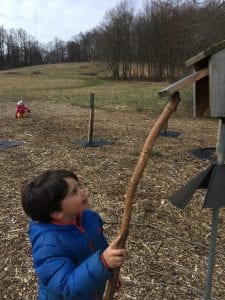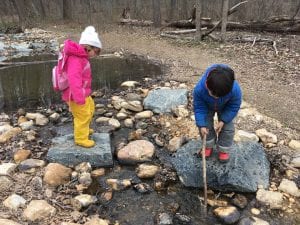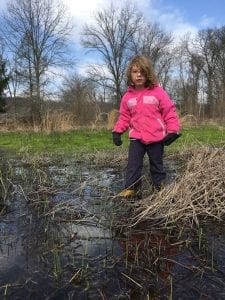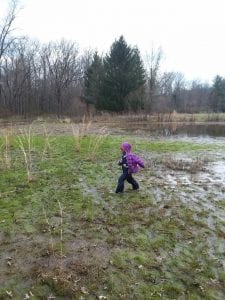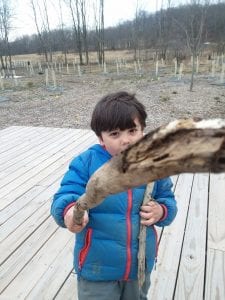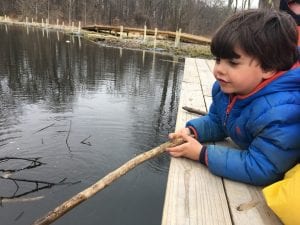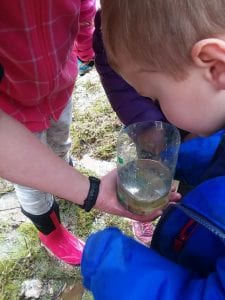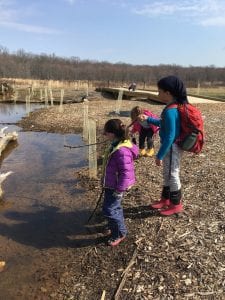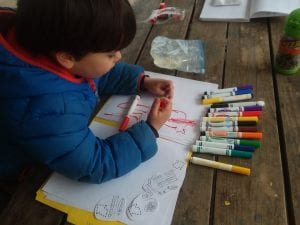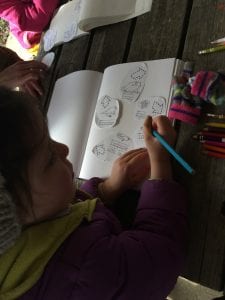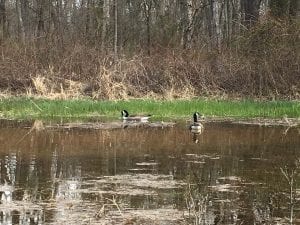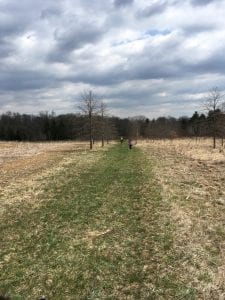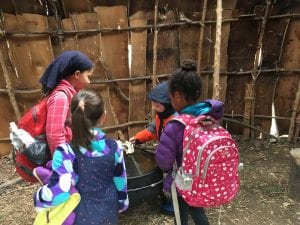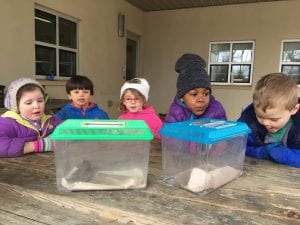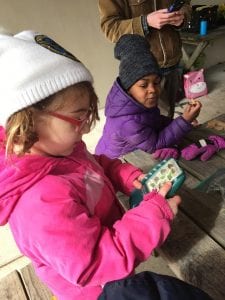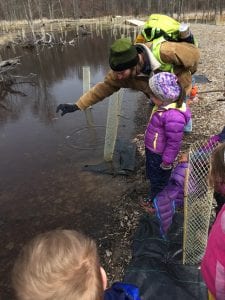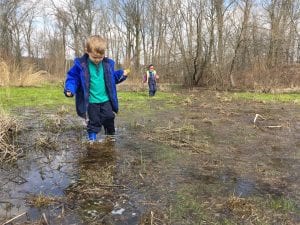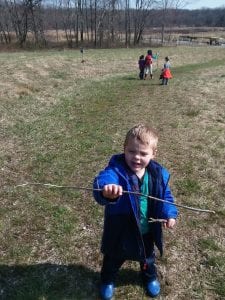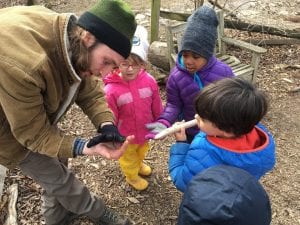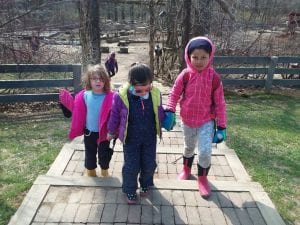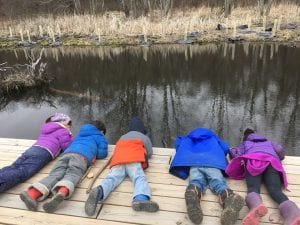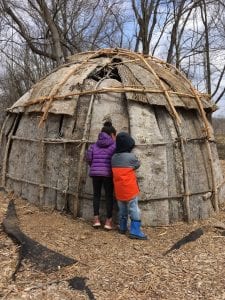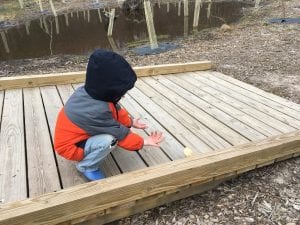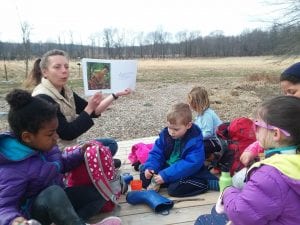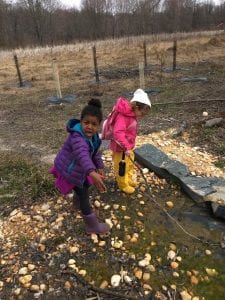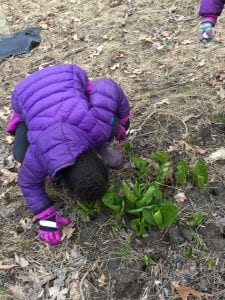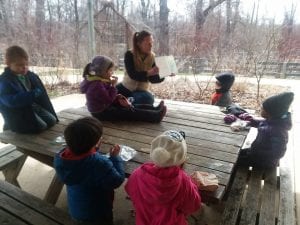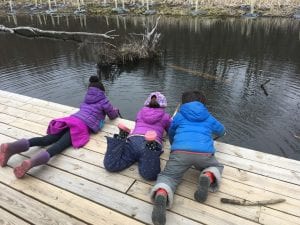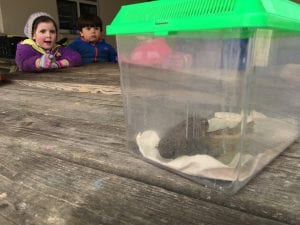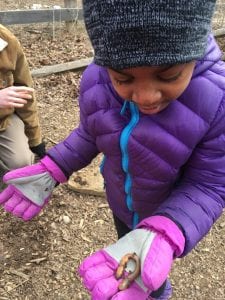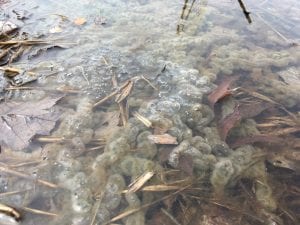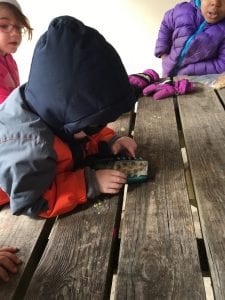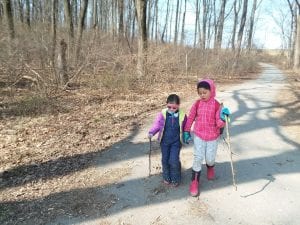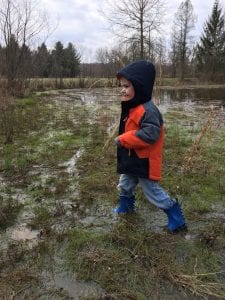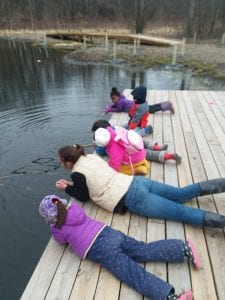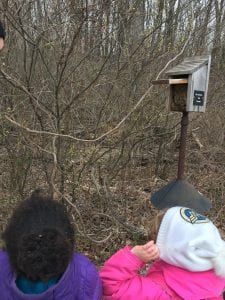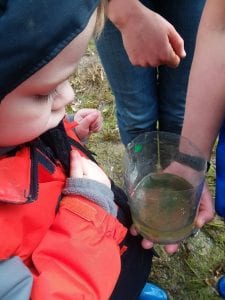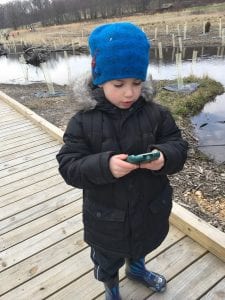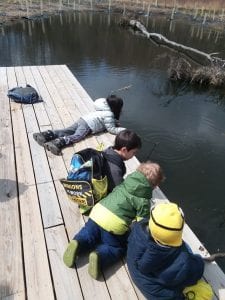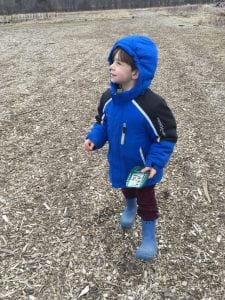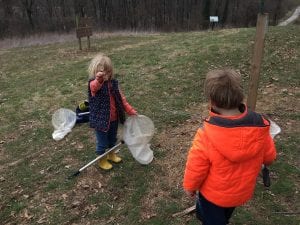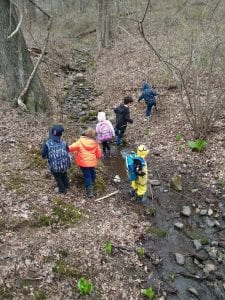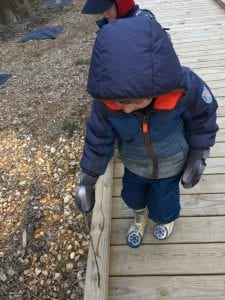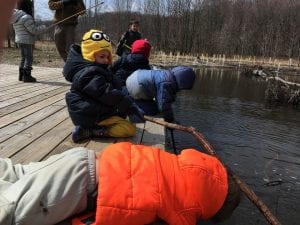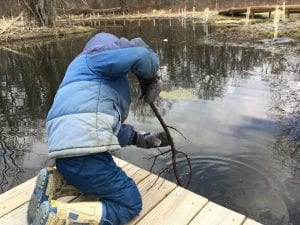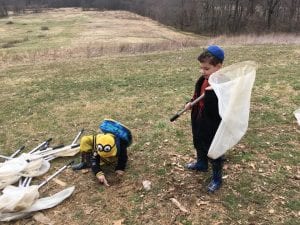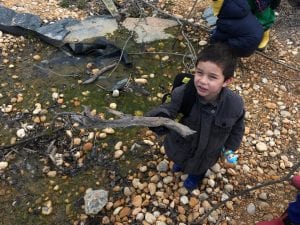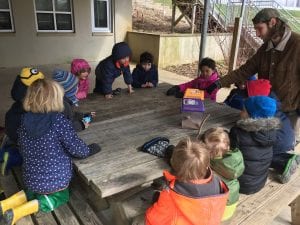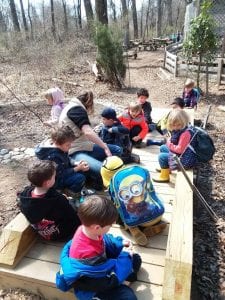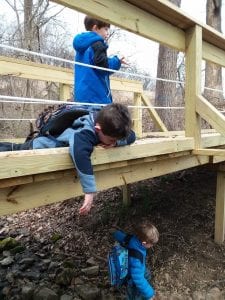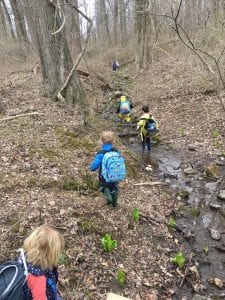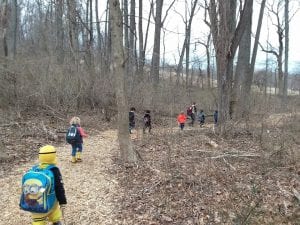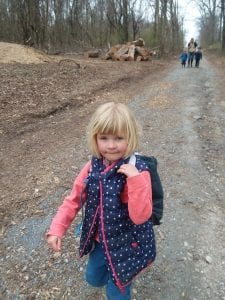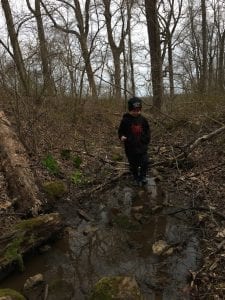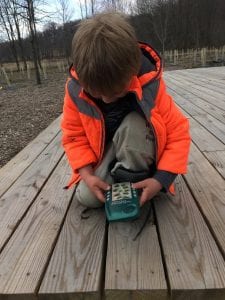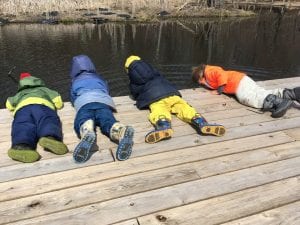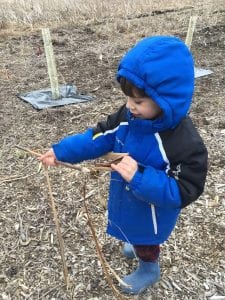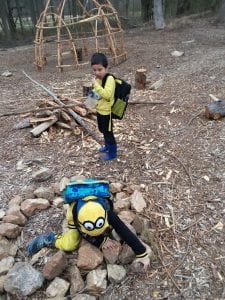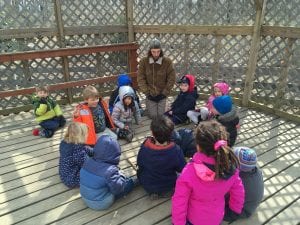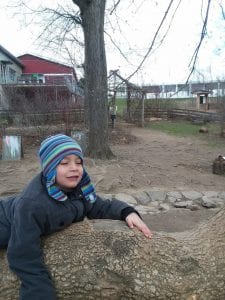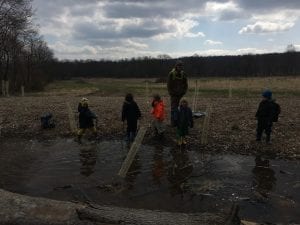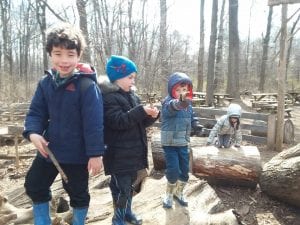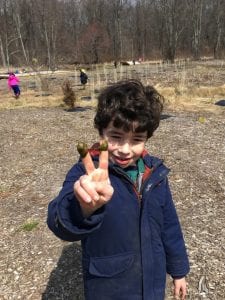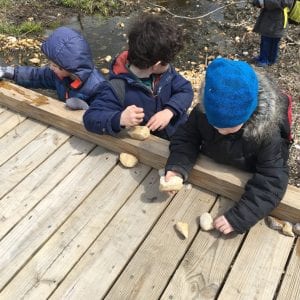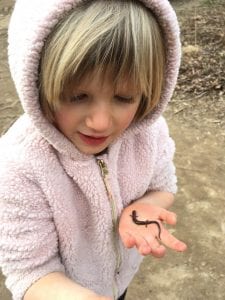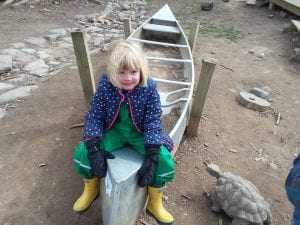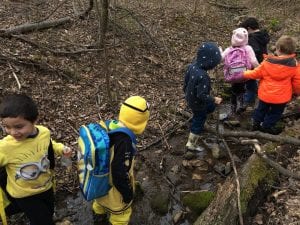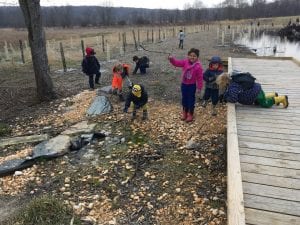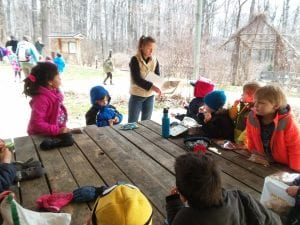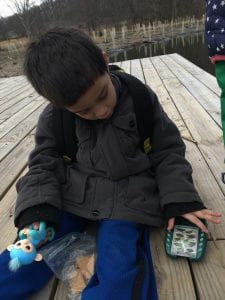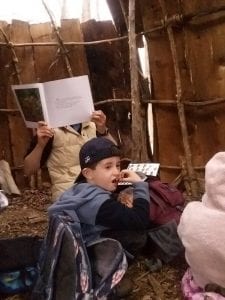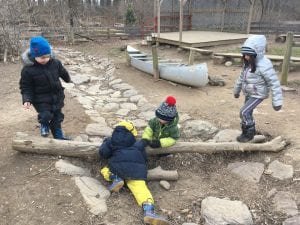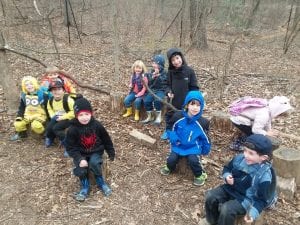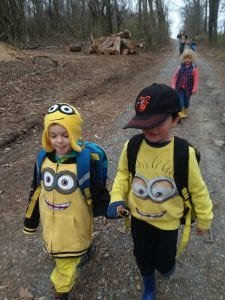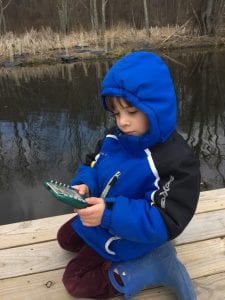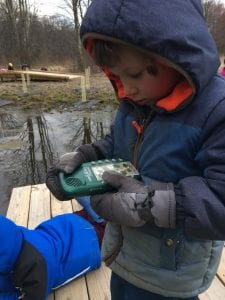Last week we explored birds, their nests, and their eggs and we learned that not just birds lay eggs! We found that many different types of animals lay eggs and that they are called Oviparous animals. Since amphibians are Oviparous, we explored their world this week.
After talking about what we already know about amphibians, we read a book called About Amphibians: A Guide for Children by Cathryn Sill to confirm our knowledge and expand our basic understanding of the animal class. We talked about the life cycle of frogs and how they hatch from the egg as a tadpole. They then grow legs and lose their tails and grow into adult frogs. It was fun to see the different parts of the lifecycle this week!
We had a couple of visitors come to the class this week: a frog and a toad. We observed the two visitors and noticed similarities and differences. We discovered that the toad was bigger and his skin was much drier and rougher than the smooth, wet skin of the frog. The frog also had webbing between his toes, while the toad did not. Though different in many ways, the frog and the toad both had ear holes that we were able see.
We also learned that, like birds, many frog and toads can sing. We took a frog and toad caller down to the wetlands in order to learn some different songs and to try to call to the adult frogs and toads that live down there. While we didn’t receive any responses from the adults, we were able to find toad eggs and tadpoles. While down at the wetlands, we created fishing poles and pretended to fish for another oviparous animal: fish!
On Wednesday and Thursday we went on a longer hike on Bauer Preserve. We made it to the back wetland on Wednesday where we found tadpoles and frog eggs. We also got to observe a couple of Canadian Geese. On Thursday we checked for amphibians in a stream that we found. While we did not find any amphibians or signs of them, we had a great time exploring and smelling the skunk cabbage. We used amphibian pocket guides and amphibian guide books to learn how to identify the different species and to see how many amphibians live in North America!
Another amphibian we spotted this week was the salamander. We used log rolls to look under logs in the outdoor classroom and along the trail in order to find salamanders in their homes. We found quite a few, including a Red-Backed Salamander and a Slimy Salamander. We read a story called The Salamander Room by Anne Mazer about a child that finds a salamander in the woods, takes it home as a pet, and then has to change his room so that the salamander can live happily. His room ends up turning into a forest, which we all decided would be really cool if the weather was always nice.
Mon/Wed:
- Any Frogs in this Wetland Area?
- Bat House
- Calling Frogs Along the Trail
- Calling to the Frogs
- Checking out the Wetland
- Checking the Bird House
- Crossing the Stream
- Exploring the Wetland
- Exploring
- Fishing Pole
- Fishing
- Found a Tadpole
- Found More Algae
- Frog Lifecycle Journaling
- Frog LifeCycle
- Geese!
- Hiking on Bauer
- In the Long House
- Is it a Frog or a Toad?
- Listening to the Call of the Frog we Just Met
- Looking for Eggs
- Looking for Tadpoles
- Magic Stick
- Mr. Travis Found a Salamander
- New Friends
- Peering off the Dock
- Plugging up Holes in the Long House Walls
- Rolling his Rock Down the Bridge
- Salamander Story
- Slimy Algae
- Smelling the Skunk Cabbage
- Snack and Story
- Stirring up the Water
- That’s the Toad!
- This is a Huge Worm!
- Toad Eggs!
- Using the Frog Caller
- Walking sticks for our Hike
- Walking through the Wetland
- Watching Ripples
- We Finally Found a Nest!
- We Found Frog Eggs!
Tues/Thurs:
- Any Frogs Here?
- At the Edge of the Dock
- Calling All Frogs!
- Caught a Leaf Bug
- Checking for Amphibians
- Drawing with Algae
- Fishing for Sticks
- Fishing
- Found some Nets!
- Found the Slimy Algae
- Frog or Toad?
- Goodbye from the Bridge
- Hanging on the Bridge
- Heading up the Creek
- Hiking on Bauer
- Hiking
- In the Creek
- Listening to his Favorite Frog Calls
- Looking Off the Dock
- Making a Fishing Pole
- Minion in the Fire Pit
- Morning Meeting
- Morning Tree Hug
- No Frogs in this Wetland Area
- On their Ship with their Blasters
- Peace
- Rocks!
- Salamander!
- Sitting on the Front of her Canoe
- Sliding up the Rocks
- Slime
- Snack and Story
- Snacks and Frog Calls
- Story and Snack in the Long House
- The Bridge
- The Gang
- The Minions
- Which Frogs live Here?
- Will the Frogs Call Back?
